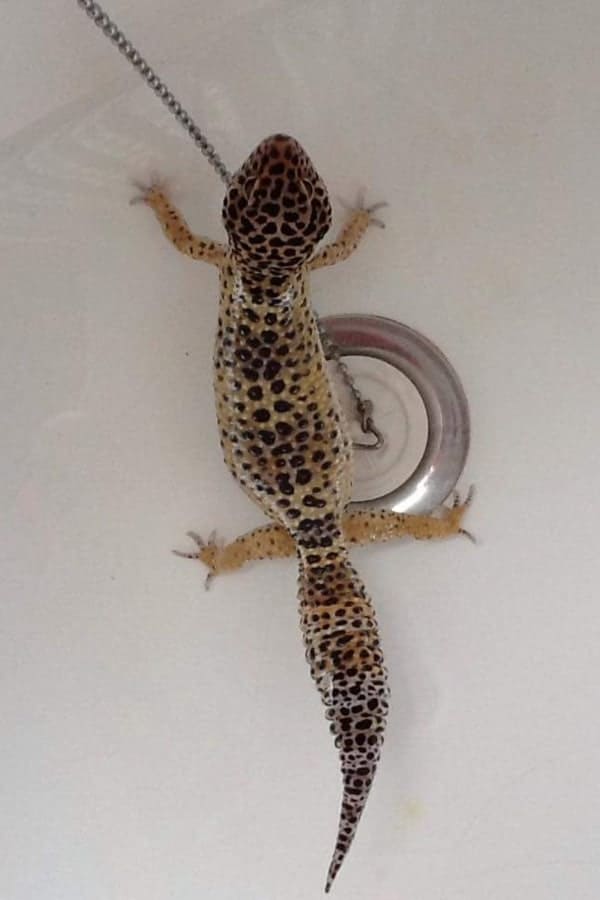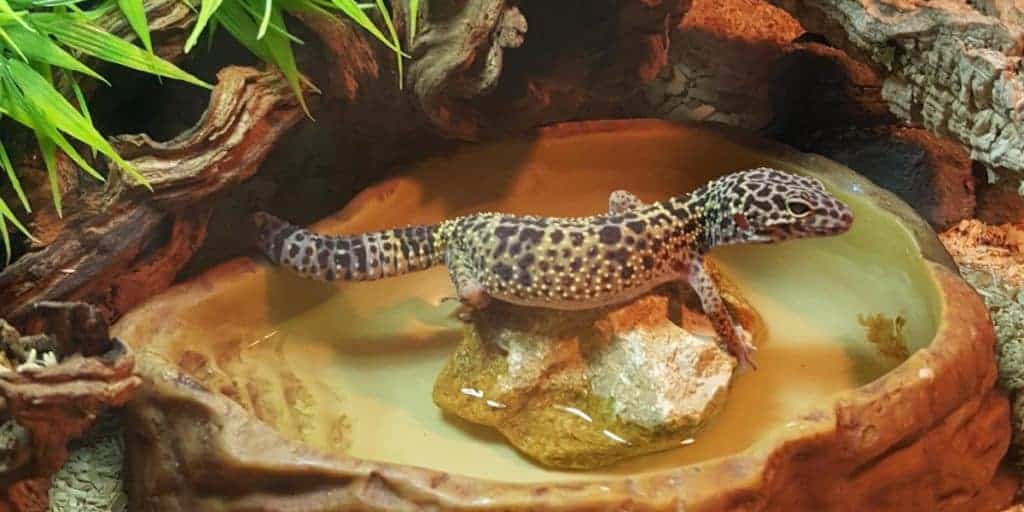Temperature and humidity are important factors for leopard geckos, especially when they are in the process of shedding their skins. Most often, they need a humid, warm, and moist environment to begin the skin shedding process without any complications.
Usually, reptiles have a dry, scaly skin, which means they don’t need a moist environment under normal circumstances. Their skin has a special covering, which can hold the moisture levels adequately. This, in particular, is true for those reptiles that live in dry habitats.
However, when shedding, leopard geckos require optimal humidity levels between 30 and 50 per cent.
Higher humidity levels are harmful to your leopard gecko and as result, they can cause skin infections. At the same time, lower humidity levels can cause dryness of the skin and lead to certain complications.
How to keep leopard geckos skin hydrated?
Water and moisture are essential for the optimal health of all pets, including reptiles like leopard geckos. Not only is water important for proper health, but it is also useful for temperature regulation, blood circulation throughout the body, and skin shedding.
Provide Enough Water
When you notice your leopard gecko has dry skin, it is important to take a few substantial steps to rehydrate your pet. For instance, you can provide your gecko with water and diluted electrolyte solutions, such as Ricelyte and Pedialyte to keep them hydrated.
Experts recommending using a needleless syringe or eyedropper to drip water onto the leopard geckos short and blunt snout. Continue offering water or electrolyte drinks so that the leopard gecko can lick the moisture off and drink enough fluid.

Maintain optimal humidity levels
When your leopard gecko has issues shedding its skin, it leads to a problem called “Dysecdysis.” It is a common condition in leopard geckos, which is usually due to a dry environment with lower levels of humidity.
Can Leopard Geckos Regrow Their Toes?
Therefore, it is essential to offer them a proper hiding area filled with damp sphagnum moss to avoid the issue of dryness. Also, you have to ensure avoiding sand or loose substrate for bedding. Instead, you can use a paper towel to keep the conditions optimal for shedding. Otherwise, the sand or loose substrate may cause skin irritation.
Adding moss to the tank can help increase humidity levels. It helps the levels of humidity stay up and keep the leopard geckos skin more natural and hydrated. If you notice that the levels of humidity are dropping fast, then you have to mist more.
Consult your Veterinarian
If you think the above options are not working for you, then you can take your gecko to the veterinarian. He or she will ask you a few questions about your geckos’ husbandry. It is important to ask the veterinarian about the causes of skin dryness.
The Vet will tell you how to keep the conditions optimal so that you can avoid such a problem in the future. Likewise, the Vet may also prescribe certain vitamin supplements or mineral oils that will keep your gecko’s skin hydrated.




